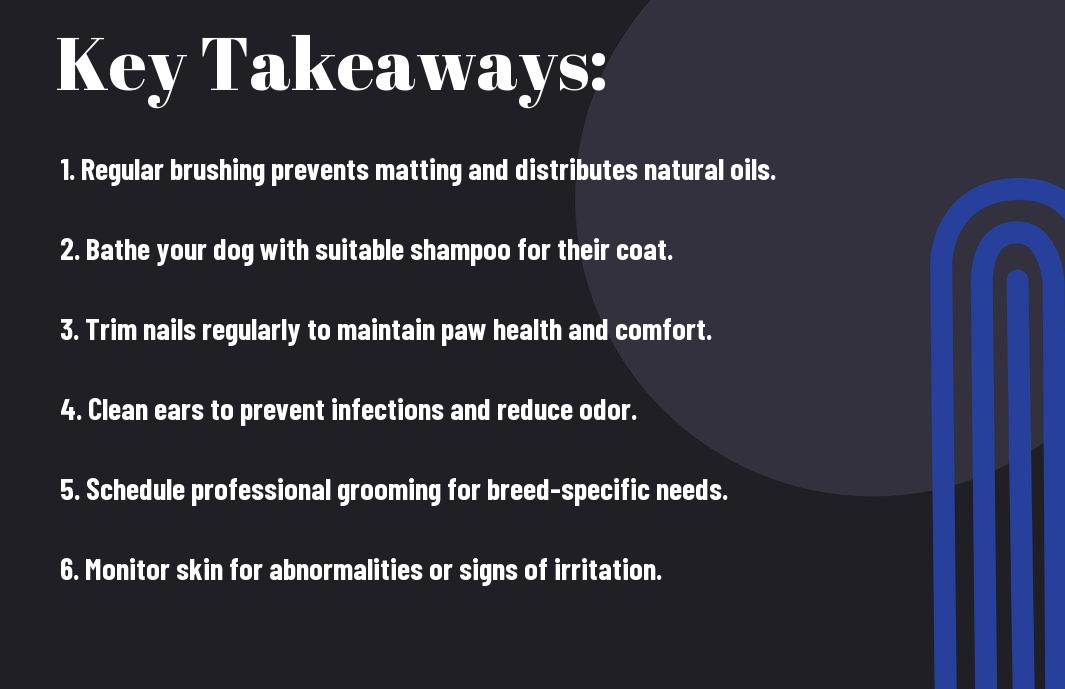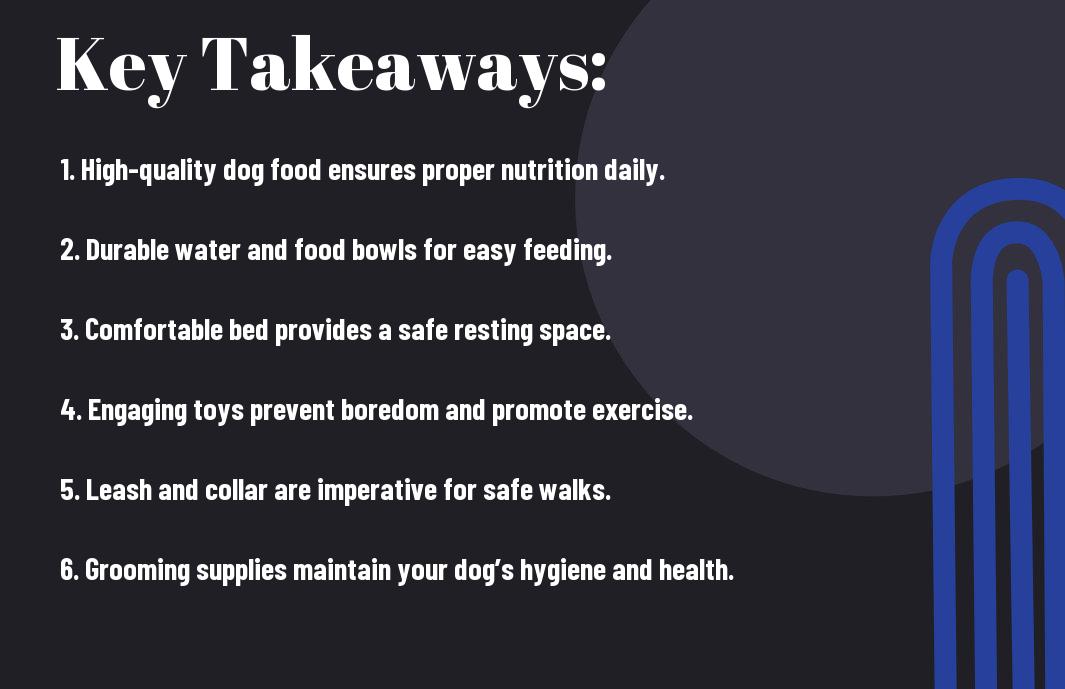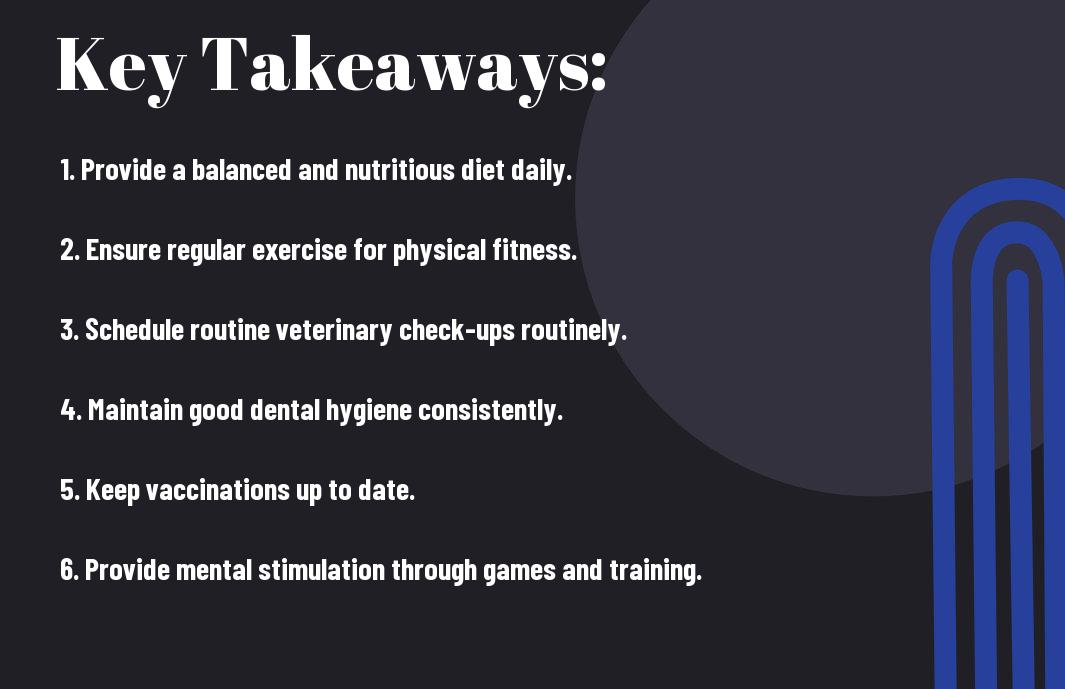Horse grooming is imperative for maintaining your horse’s health and well-being. By implementing this daily grooming checklist, you can ensure that your horse is not only clean but also comfortable and happy. From examining their coat for injuries or irritations to checking hooves for stones and debris, each step plays a vital role in preventing issues that could affect their performance and mood. Follow these 10 steps to keep your horse in top shape every day.
The Foundation of Daily Care: Understanding Your Horse’s Grooming Needs
Daily grooming plays a vital role in your horse’s overall health and emotional well-being. By establishing a regular grooming routine, you can enhance your bond with your horse while also monitoring its skin, hooves, and general condition. Understanding the specific grooming needs of your horse will enable you to provide effective and tailored care, minimizing potential health issues and ensuring a healthy, happy horse.
Tailoring Your Routine to Horse Breed and Lifestyle
Your horse’s breed and lifestyle significantly influence its grooming requirements. Various breeds have different coat types, whether it’s a thick mane or a fine coat, which dictates how often you’ll need to brush and care for them. Additionally, horses that are active in competitive disciplines may need more frequent grooming to keep their coats shiny and free of dirt and debris compared to recreational horses.
Identifying Specific Areas of Concern
It’s crucial to pay attention to specific areas of concern during grooming to ensure your horse remains in optimal condition. Look for signs of irritations, such as excessive itching or heat, and monitor for injuries like cuts, abrasions, or thrush in the hooves. Regular check-ups can help you catch problems early, allowing for prompt treatment and reducing the risk of serious health issues.
When identifying specific areas of concern, focus on regions that are prone to problems, such as the girth area, under the tail, and hooves. Be vigilant for changes in behavior, as they often indicate discomfort. A thorough inspection should include checking for parasites, skin infections, and abnormal swelling. Regularly addressing these areas helps maintain your horse’s health and alerts you to any evolving conditions that require attention or veterinary care.
The Essential Tools of the Trade: Building Your Grooming Kit
Creating a comprehensive grooming kit is fundamental to maintaining your horse’s health and well-being. Each tool serves a specific purpose, ensuring your horse stays clean and comfortable. Invest in high-quality items that suit your horse’s breed and coat type. This kit can be tailored to your routine, making grooming efficient and enjoyable for both you and your horse.
Must-Have Grooming Tools and Their Purposes
Your grooming kit should include imperative tools such as a curry comb for loosening dirt, a stiff brush for removing debris, and a soft brush for delicate areas. You’ll also need a mane and tail comb to detangle without damage, hoof picks to maintain hoof health, and sponges for face washing. Each tool plays a vital role in keeping your horse clean, comfortable, and healthy.
Maintaining and Organizing Your Grooming Supplies
To ensure the longevity of your grooming tools, you should routinely clean and inspect them for wear. Store your supplies in a dry, organized manner — using a tote or bag keeps everything easily accessible. Regularly check for damage, particularly with tools like hoof picks and combs, as broken tools can injure your horse. A well-maintained grooming kit not only enhances grooming efficiency but also promotes a positive routine for you and your horse.
Maintaining and organizing your grooming supplies involves cleaning tools after every use to prevent the buildup of dirt and bacteria. Use mild soap and water for brushes and combs, and ensure they dry completely to avoid mold. Store them in a designated area where you can easily find each item, such as a grooming tote with compartments. This organization not only saves you time but also ensures safety by preventing damage to tools that could harm your horse. Regularly assess your kit to replace any worn-out tools, keeping your grooming routine effective and safe.
The Ultimate Daily Horse Grooming Checklist – Step-by-Step Grooming Techniques: Creating a Flawless Coat
| Step | Description |
| 1. Curry Comb | Use circular motions to loosen dirt and debris. |
| 2. Body Brush | Brush in the direction of hair growth for a shiny coat. |
| 3. Mane and Tail Comb | Gently detangle to prevent breakage. |
| 4. Hoof Pick | Clear rocks and debris to maintain hoof health. |
The Importance of the Curry Comb
The curry comb is crucial for your grooming routine, as it effectively loosens dirt, dust, and dead hair from your horse’s coat. When used correctly, it promotes blood circulation, enhancing the coat’s overall health. This step prepares your horse for subsequent grooming techniques, making it easier for brushes to remove debris.
Body Brushing for a Shiny Finish
Body brushing should be performed after using the curry comb, as it creates a shiny finish on your horse’s coat. Choose a body brush with soft bristles and work in the direction of hair growth to remove remaining dust and dander. This technique not only enhances coat appearance but also stimulates the skin and distributes natural oils.
For optimal results with body brushing, ensure that you apply gentle pressure while working in systematic strokes. By doing so, you encourage the natural oils present in your horse’s skin to rise to the surface, contributing to a healthy, glowing coat. Be attentive to sensitive areas like the belly and legs, adjusting your technique to suit your horse’s comfort.
The Art of Mane and Tail Care
Proper care of your horse’s mane and tail is vital for their health and aesthetics. You should use a wide-toothed comb to gently detangle any knots, minimizing breakage and discomfort. Applying a light conditioner can enhance their appearance and manageability.
Your horse’s mane and tail require consistent attention to prevent tangles and damage. Regular grooming helps maintain their beauty while keeping the hair strong and healthy. You may also consider using a detangler spray to make the process smoother and reduce the risk of pulling. Additionally, braiding the mane or tail can protect it from breakage, especially if your horse is in a muddy or rough environment.
Hoof Health Matters: Regular Maintenance for Optimal Performance
Maintaining your horse’s hooves is necessary for their overall health and performance. Regular care ensures that your horse remains comfortable and capable of performing at its best. Neglecting hoof care can lead to serious issues, including lameness, infections, and even long-term damage. Make hoof maintenance a priority in your daily grooming routine to support your horse’s well-being.
Spotting Hoof Problems Before They Escalate
Being proactive about hoof health allows you to spot potential issues early. Look for signs such as cracks, chips, or unusual odor, and pay attention to your horse’s behavior when walking or standing. Observing these warning signs can help you address problems swiftly, potentially avoiding more serious complications and costly veterinary care.
Basic Hoof Care Techniques
Implementing basic hoof care techniques can significantly improve your horse’s hoof health. Regularly clean your horse’s hooves to remove debris, mud, and manure, which can harbor bacteria. Use a hoof pick to inspect for lodged stones and ensure that the frog is clean. Regular trimming and, if necessary, shoeing by a professional farrier will keep hooves healthy and functional.
Incorporate a routine of cleaning and inspecting your horse’s hooves daily to promote optimal health. Use a hoof pick to carefully remove dirt and debris, which helps prevent infections. Schedule regular visits from a qualified farrier to trim and balance your horse’s hooves, ensuring they are properly shaped for performance. Monitoring hoof condition and addressing issues such as thrush or lameness at the first sign can prevent larger problems down the line. Your diligence in basic hoof care is fundamental to your horse’s soundness and athletic ability.

Health Checks in Disguise: Monitoring Vital Signs During Grooming
During your daily grooming routine, you can effectively monitor your horse’s health by observing vital signs and general condition. As you brush and interact with your horse, take note of any irregularities in their behavior, body temperature, or physical appearance. This routine practice not only helps maintain your horse’s coat but also serves as an opportunity to detect early signs of health issues, ensuring your horse remains healthy and comfortable.
Recognizing Signs of Illness Through Grooming Practices
While grooming, pay attention to any changes in your horse’s demeanor or physical state. Look for signs such as unexpected weight loss, changes in appetite, or alterations in skin texture. Additionally, watch for abnormal vital sign readings, like an elevated heart rate or irregular breathing patterns. By being observant, you can catch potential problems early, leading to a quick response and improved outcomes for your horse.
Incorporating Regular Health Assessments into Your Routine
Integrate health assessments into your grooming sessions by consistently checking your horse’s vital signs, such as pulse, respiration, and temperature. Assess their body condition score and check for areas that may require attention, like sore spots or unusual swelling. Regular evaluations not only help in identifying health issues early but also foster a deeper bond between you and your horse.
To incorporate regular health assessments into your routine, establish a consistent schedule where you gauge your horse’s vital signs during grooming sessions. Make it a habit to check their heart rate, respiration, and temperature monthly, alongside daily visual inspections for any physical changes. This routine ensures you stay attuned to your horse’s needs, allowing for prompt action if you notice any concerning signs. A proactive approach leads to a healthier, happier horse and strengthens your relationship through trust and care.

Building a Bond: Using Grooming Time for Equine Connection
Grooming your horse is not just about keeping their coat shiny; it’s an opportunity to build a deep bond with your equine companion. During grooming sessions, you can establish a strong connection that enhances trust and communication. By offering gentle touches and consistent care, you foster a sense of safety that makes your horse more comfortable with you and your interactions.
The Benefits of Establishing Trust Through Grooming
Establishing trust through grooming leads to a more relaxed and cooperative horse. When you regularly engage in grooming, it helps build your horse’s confidence in you as a handler. This trust also results in improved behavior during training and riding sessions, creating a harmonious partnership that enhances your overall experience together.
Behavioral Cues to Strengthen Your Relationship
By being aware of your horse’s behavioral cues, you can significantly enhance your bond. Pay attention to signs such as ear positioning, body language, and reactions during grooming to understand their comfort levels. This awareness allows you to adjust your approach, ensuring a positive experience that reinforces trust and connection.
Fostering a strong relationship requires paying close attention to your horse’s behavioral cues. For instance, ears that are forward indicate curiosity and engagement, while pinned-back ears can suggest discomfort or irritation. By observing these signs during grooming, you can tailor your touch and technique to meet their needs, allowing for a more enriching interaction. Additionally, offering treats or gentle praise during grooming can encourage positive responses, further solidifying your bond. Being attuned to their reactions not only cultivates trust but also creates a fulfilling and enjoyable grooming routine for both you and your horse.
To wrap up
Taking this into account, following the Ultimate Daily Horse Grooming Checklist ensures that you provide the best care for your horse. By methodically completing each step, you enhance your horse’s health, comfort, and overall happiness. Consistent grooming not only helps you build a strong bond with your horse but also prevents potential health issues. Make these practices a part of your daily routine, and you will see a positive impact on your horse’s well-being and performance.
Q: What are the crucial steps in the Ultimate Daily Horse Grooming Checklist?
A: The crucial steps include:
1. Safe haltering
2. Initial visual inspection
3. Currying to remove loose dirt and hair
4. Picking out hooves
5. Bathing as needed
6. Grooming mane and tail
7. Checking for injuries or parasites
8. Applying fly spray or coat conditioner
9. Cleaning tack
10. Ensuring adequate water and food supply
Q: How often should I perform the grooming checklist for my horse?
A: The grooming checklist should be performed daily. Regular grooming promotes good hygiene, bond with your horse, and helps identify any health issues early.
Q: What tools do I need for the Ultimate Daily Horse Grooming Checklist?
A: Required tools include:
1. Halter and lead rope
2. Curry comb
3. Stiff and soft brushes
4. Hoof pick
5. Mane and tail comb
6. Bucket and sponge for bathing
7. Fly spray or coat conditioner
8. Tack cleaning supplies











